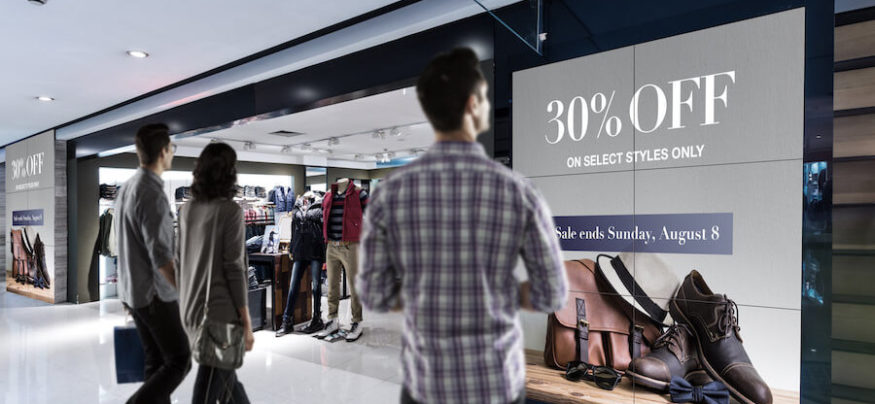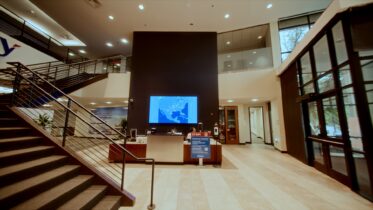The best way to ensure long-term success with a digital signage deployment is to do careful planning upfront.
Here are four common rookie mistakes, and how first-time digital signage network operators can dodge them:
1. Technology First, Objectives Eventually
Here’s how the digital signage conversation gets off to the wrong start in many organizations: “We’re going to put big screens around our locations, and probably a video wall or two. Let’s get some pricing on screens, and find out if we need any special software.”
Instead, which screens to use and what software is needed to manage those screens should be the outcome of planning — not step one.
Successful planning of a digital signage network starts with defining the network’s objectives. That’s essentially answering the big question of why screens are being considered, and confirming the use of screens and software will have a cause and positive effect.
Example objectives include:
- Retail: Timely, easily-changed sales and promotional messages at the places where, and the moments when, consumers make buying decisions
- Food services: Digital menus at counters and drive-thrus that change by time of day, and can be easily managed down to a specific location
- Workplace: Real-time display of key performance indicators (KPIs) for everything from sales to manufacturing capacity, replacing weekly emails and presentations with always-current, at-a-glance visuals
Knowing the objectives directly informs what screens will do, where they need to be, what kind of content will be on them, and the types of technologies — from media playback to bandwidth — that are really needed.
If those objectives aren’t clear, end users can easily find themselves wasting money and time on technologies they eventually learn aren’t suitable for the task.
2. More Than a Pretty Face?
Beautiful 4K displays and awesomely crisp and grand direct-view LED video walls won’t get viewers just because they exist. People keep looking at screens when what’s on them is fresh and compelling — and not the same thing they’ve been seeing for days, weeks or months.
The mistake many early-stage digital signage networks make is under-investing in and under-planning content — leaving images on the screen too long or simply repurposing content from other mediums such as online or broadcast. A well-planned network has an operating budget for creative and technologies in place that will keep content new without ballooning costs.
Digital Signage 101
Get your complete guide to planning, budgeting and executing a successful digital signage project. Download Now
Successful network operators use tools like video analytics to understand how long people watch, using pattern detection and artificial intelligence. These technologies recognize when people are looking at screens, count them and log their activity, generating rich insights into viewers’ characteristics and behaviors, and serving up automated content tailored to their particular interests.
Common web technologies such as HTML5 make it possible for operators to develop dynamic content templates that change whenever externally fetched data changes — greatly reducing the burden of creating new content files. In practical terms, that means whenever a fee or mass transit notice changes in a data table, it also changes on the screens paired with that data.
3. It’s Always Sunny in the Lobby
What looks good on a trade show floor or vendor demo center won’t necessarily look good in the real world. The biggest pain point for flashy new displays? Sunshine.
Two things happen when a large screen display is placed in a window, or in a sun-filled atrium of an office building or retail floor. First, full sunlight overpowers the brightness of conventional monitors, washing out colors and in many cases, making it difficult or impossible to see what’s on the screens. Second, screens bathed in sunlight become ovens — with the heat-load of hot, mid-afternoon sun baking the sensitive electronics.
Display manufacturers like Samsung have engineered specialized displays that win the battle against sunlight, with brightness capabilities that allow the vivid colors of graphics and video to cut through even the most intense glare conditions. Well-engineered high-brightness displays have settings that adjust based on light conditions, toning down the brightness on cloudy days and running like conventional screens come evening and overnight. These screens are also designed with specialized cooling and ventilation designs to handle the sun’s heat.
4. Many and Moving Parts
Conventional digital signage installations have a lot of components: PC-based media players, power supplies, display signal cables, control cables, network cables and, of course, the displays themselves. Each of those is a point of failure — something that might break or come loose. PCs may have spinning hard disk drives or fans that can fail because of airborne dust and debris, bumps or manufacturing flaws.
When equipment fails in the field, it causes service disruptions that can be anything from a nuisance to a catastrophe. A digital menu board going down in a quick service restaurant, for example, means customers can’t see their ordering options. Sales will likely suffer as a consequence.
A relatively new kind of digital signage technology — solid-state smart signage displays — hugely reduces the number of components and, as a result, the potential points of failure. System-on-Chip (SoC) displays embed a media player in the display, eliminating the need and cost of an external media player. The only cable it needs is the one for power.
Digital signage solutions providers are finding that SoC displays dramatically reduce field failures, as well as all the operating costs associated with going on-site for repair and replacement work.
Success with digital signage can be measured in many ways, but some of the best metrics are simple: the screens are on, people can see them, and the content gives them reasons to keep looking.
In order to fully reap the benefits of digital signage, developing a Total Cost of Ownership model is essential.








